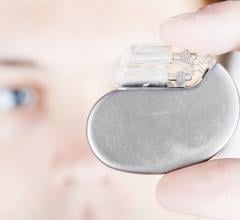
May 6, 2015 — Ultrasound can increase the rate at which heart cells beat, researchers from Drexel University report. In their paper “Ultrasound-Induced Modulation of Cardiac Rhythm in Neonatal Rat Ventricular Cardiomyocytes,” published ahead-of-print in the Journal of Applied Physiology, they describe the ultrasound settings that can change the beat frequency of cardiac cells.
The heart beating irregularly or stopping altogether is a life-threatening condition that must be treated immediately to avoid serious organ damage or death. Current ways of restoring and maintaining heart rate are invasive, involving electrodes threaded through the veins or placed surgically. Ultrasound is an attractive alternative because it can be applied non-invasively and would avoid the complications associated with surgery. Previous studies have shown that ultrasound at a high enough intensity can cause premature contractions and may be able to synchronize beating heart cells, suggesting the feasibility of an ultrasound pacemaking device.
“While at present it is unclear if prolonged capture and pacing of the myocardium with acoustic energy is possible, such technology would greatly impact the clinical practice of cardiology. Acute cardiac pacing with ultrasound could be utilized for temporary pacing in both emergency and non-emergency settings,” including heart attack and emergency life support in sudden cardiac arrest, according to the researchers. “This device would be completely extracorporeal, avoiding the morbidity associated with transvenous pacemakers and surgically placed epicardial leads.”
The purpose of the study was to determine the ultrasound intensity and pulse duration that could influence the rate heart cells beat. Using a custom-made ultrasound probe to deliver ultrasonic waves to cells, the researchers found that the lowest intensity they tested, 0.02 W/cm2, given in 1 millisecond-long pulses every 300 msec increased the beat frequency of neonatal rat cardiac cells most effectively.
“Ultrasound-induced stimulation of cardiomyocytes may prove to be a practical, non-invasive clinical tool for capturing and pacing the myocardium in both emergent and non-emergent settings,” the researchers concluded.
For more information: www.jap.physiology.org


 May 02, 2025
May 02, 2025 









